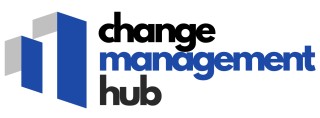
Defining Corrective Action Requests
Clarifying the Concept of Corrective Action Requests
Corrective Action Requests (CARs) are essential tools in quality management and change management processes. They serve as formal requests to address and rectify issues that have been identified within a system, product, or process. These requests are not just about fixing problems; they are about understanding the root cause of an issue to prevent its recurrence. This is where the concept of root analysis comes into play, as it helps in identifying the underlying cause of quality issues.
In the context of manufacturing and supply chain management, CARs are crucial. They ensure that any quality issues are addressed promptly, maintaining the integrity of the product and the satisfaction of the customer. When a supplier corrective action request (SCAR) is issued, it often involves collaboration between the supplier and the organization to develop an action plan that addresses the problem effectively.
The process of issuing a CAR typically begins with the identification of a problem or quality issue. This could be a defect in a product, a process inefficiency, or any deviation from the expected level of quality. Once the issue is identified, a request is made to analyze the root cause and implement corrective actions. This is followed by a detailed action report that outlines the steps taken to resolve the issue and prevent future occurrences.
Understanding the role of corrective action requests in change management is vital for organizations aiming to maintain high standards of quality and efficiency. For more insights into implementing effective change management tools, you can explore effective strategies for implementing change management tools.
Importance in Change Management
The Critical Role of Corrective Action Requests in Change Management
In the realm of change management, corrective action requests (CARs) serve as a pivotal tool for maintaining and enhancing quality across processes and products. These requests are not merely about addressing immediate issues; they are integral to a broader strategy aimed at continuous improvement and sustainable change.
Corrective action requests are essential in identifying and rectifying quality issues that arise within the supply chain or manufacturing processes. When a problem is detected, whether it's a defect in a product or a breakdown in supplier quality, a CAR is initiated to investigate the root cause. This process ensures that the issue is not only resolved but also prevented from recurring, aligning with the principles of quality management and supplier management.
Moreover, CARs play a significant role in supplier corrective actions, where they help in maintaining the integrity of the supply chain. By addressing supplier-related problems through a structured action plan, organizations can uphold their quality standards and foster better supplier relationships.
Implementing a corrective action request involves a thorough root analysis to understand the underlying issues. This is followed by developing a corrective action plan that outlines the steps needed to address the problem. The plan is then executed, and its effectiveness is monitored through an action report, ensuring that the corrective actions have successfully mitigated the issue.
For organizations aiming to enhance their change management strategies, understanding the importance of CARs is crucial. These requests not only help in resolving current problems but also contribute to preventive actions, ensuring long-term improvements. For more insights on crafting an effective change management plan, you can explore this practical guide.
Steps to Implement a Corrective Action Request
Executing a Well-Structured CAR for Optimal Results
Initiating a Corrective Action Request (CAR) in change management involves several key steps to address quality issues effectively. These steps ensure that the root of an issue is identified and resolved, minimizing disruptions and enhancing the quality management process.- Identify the Problem: Start by precisely identifying the problem or non-conformance. Whether it's a supplier issue, product defect, or process inefficiency, a clear description is essential for guiding subsequent actions.
- Conduct a Root Cause Analysis: Analyzing the root cause is a critical step. Employ techniques such as the "5 Whys" or Fishbone Diagram to dig deep into the problem, avoiding superficial conclusions and ensuring the true cause is addressed.
- Develop an Action Plan: Based on the root cause analysis, create a detailed action plan. This should outline the corrective actions needed, preventive actions to avoid recurrence, and the timeline for implementation. Clear accountability at every level of management is crucial here.
- Implement the Actions: With an action plan in place, the next step is execution. This requires coordination across teams and often involves supplier management to ensure that supply chain issues are corrected swiftly. Efficient execution of the SCAR process or request scar procedures can significantly improve supplier quality.
- Verify Effectiveness: Post-implementation, it’s important to verify that the corrective actions have resolved the issue and that quality standards are met. Regular follow-up and quality inspections help in maintaining standards.
- Document and Review: Keeping detailed records of the entire CAR process in an action report or request car documentation is imperative. This documentation not only aids in future reference but also in reporting to higher management and stakeholders.
Common Challenges and Solutions
Overcoming Obstacles in Implementation
Implementing Corrective Action Requests (CARs) and their associated processes can pose numerous challenges within the landscape of change management. Organizations often encounter hurdles that, if not addressed effectively, can hinder the successful deployment and functionality of corrective actions. Here are some common issues and their solutions:- Insufficient Root Analysis: One of the major pitfalls in corrective measures is the failure to conduct an adequate root analysis. This can lead to repetitive quality issues or systemic problems across supplying or manufacturing processes. Ensuring a thorough root cause analysis will aid in devising a more robust corrective and preventive action plan.
- Lack of Supplier Engagement: When suppliers are a crucial part of the change management chain, supplier corrective actions can become complex. It’s essential to engage suppliers effectively in the quality management process to foster transparency and communication. Building a strong supplier management strategy can address this challenge effectively.
- Poor Documentation Practices: Without meticulous documentation, the CAR process can become convoluted, leading to miscommunication and errors. Establishing a comprehensive action report and a request corrective framework not only clarifies the steps taken but also serves as a reference for future actions.
- Inadequate Resource Allocation: Allocation of resources can be a significant challenge, especially at the level of manufacturing and supply chain management. The implementation of corrective actions requires trained personnel and sufficient resources. Planning for resource availability ensures that the CAR process does not stagnate.
- Resistance to Change: Often, implementing quality management and corrective strategies meets resistance from stakeholders. Addressing this requires clear communication plans and involving stakeholders early in the problem-solving process. By promoting an understanding of the benefits, organizations can reduce resistance and enhance the successful implementation of corrective preventive measures.
Case Studies: Success Stories
Real-Life Applications: Overcoming Obstacles with a Touch of Forward-Thinking
Best Practices for Effective Use
Optimizing the Efficiency of Corrective Action Requests
Effectively managing Corrective Action Requests (CARs) is crucial in streamlining continuous improvement processes and enhancing overall supplier quality management. Here are some best practices to ensure the optimal use of CARs in your organization:- Establish a Transparent Process: Clearly define the steps involved in the CAR process, from identifying the initial issue to implementing the action plan. This not only helps in maintaining consistency but also in simplifying the understanding for all stakeholders involved.
- Integrate Root Cause Analysis: Conduct thorough root analysis to ascertain the cause of quality issues. Understanding the root issue is vital in developing an effective corrective action plan that addresses the fundamental problem rather than just the symptoms.
- Engage in Collaborative Supplier Management: Foster an inclusive approach with your suppliers when dealing with corrective action requests. A cooperative attitude can greatly enhance supplier corrective actions, leading to improved quality management across the supply chain.
- Implement Regular Training: Regular quality management training ensures that all team members are familiar with the latest SCAR process requirements and quality issues handling, which aligns with the overarching change management strategies in place.
- Monitor and Review Outcomes: Systematically evaluate the action report and the efficacy of the corrective actions taken. Assess whether preventive action strategies have been effectively incorporated to prevent recurrence of similar issues.
- Document Lessons Learned: Develop a comprehensive action request report that documents the entire process, from issue identification to the complete closure of the CAR. This not only acts as a reference for future scenarios but also instills a culture of learning and development within the organization.













